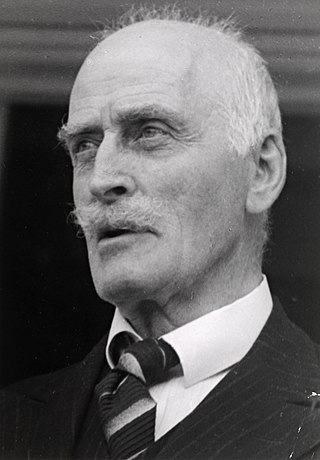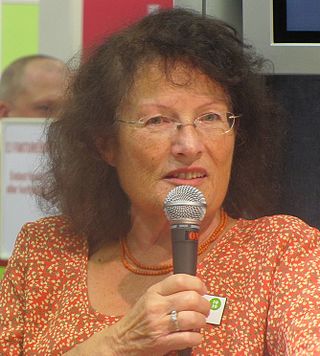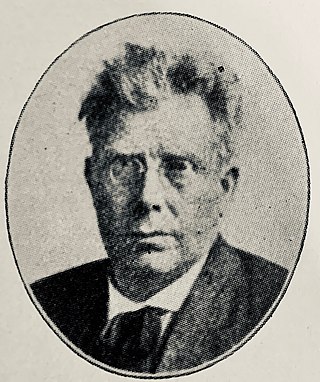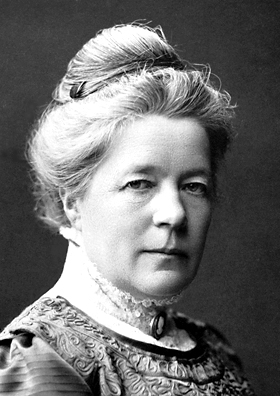
Knut Hamsun was a Norwegian writer who was awarded the Nobel Prize in Literature in 1920. Hamsun's work spans more than 70 years and shows variation with regard to consciousness, subject, perspective and environment. He published more than 20 novels, a collection of poetry, some short stories and plays, a travelogue, works of non-fiction and some essays.
Norwegian literature is literature composed in Norway or by Norwegian people. The history of Norwegian literature starts with the pagan Eddaic poems and skaldic verse of the 9th and 10th centuries with poets such as Bragi Boddason and Eyvindr Skáldaspillir. The arrival of Christianity around the year 1000 brought Norway into contact with European medieval learning, hagiography and history writing. Merged with native oral tradition and Icelandic influence, this was to flower into an active period of literature production in the late 12th and early 13th centuries. Major works of that period include Historia Norwegie, Thidreks saga and Konungs skuggsjá.

Jeppe Aakjær was a Danish poet and novelist, a member of the 'Jutland Movement' in Danish literature". A regionalist, much of his writings were about his native Jutland. He was known for writings that reflected his concern for the impoverished and for describing rural existence.

The Wonderful Adventures of Nils is a work of fiction by the Swedish writer Selma Lagerlöf, the first woman to receive the Nobel Prize in literature. It was originally published in two books, 1906 and 1907, and was first published in English as The Wonderful Adventures of Nils (1907) and The Further Adventures of Nils (1911). The two parts are later usually published together, in English as The Wonderful Adventures of Nils, but that name may also refer to the first part alone.

Decorah-Posten was a notable Norwegian language newspaper published in Decorah, Iowa. It was founded in 1874 by Brynild Anundsen, a native of Skien, Norway, and widely read by Scandinavian immigrants in several states.

Steen Steensen Blicher was an author and poet born in Vium near Viborg, Denmark.

Einar Nerman was a Swedish artist known for his portraits, book and magazine illustrations and theatrical designs.

Hunger is a novel by the Norwegian author Knut Hamsun published in 1890 by P.G. Philipsens Forlag. The novel has been hailed as the literary opening of the 20th century and an outstanding example of modern, psychology-driven literature. Hunger portrays the irrationality of the human mind in an intriguing and sometimes humorous manner.
Scandinavian literature or Nordic literature is the literature in the languages of the Nordic countries of Northern Europe. The Nordic countries include Denmark, Finland, Iceland, Norway, Sweden, and Scandinavia's associated autonomous territories. The majority of these nations and regions use North Germanic languages. Although the majority of Finns speak a Uralic language, Finnish history and literature are clearly interrelated with those of both Sweden and Norway who have shared control of various areas and who have substantial Sami populations/influences.

Sigrid Combüchen is a Swedish novelist, essayist, literary critic and journalist.

Peer Stromme also Per Olsen Strømme was an American pastor, teacher, journalist, and author.
Aasmund Brynildsen was a Norwegian essayist, biographer, magazine editor and publishing house consultant.
Edda. Scandinavian Journal of Literary Research is a magazine for research on Scandinavian literature, and for literary researchers in the Scandinavian countries. The magazine is based in Oslo.

Selma Ottilia Lovisa Lagerlöf was a Swedish writer. She published her first novel, Gösta Berling's Saga, at the age of 33. She was the first woman to win the Nobel Prize in Literature, which she was awarded in 1909. Additionally, she was the first woman to be granted a membership in the Swedish Academy in 1914.
James Walter McFarlane was a scholar of European literature, author of The Oxford Ibsen, and founding Dean of the School of European Studies at University of East Anglia which included Scandinavian studies.
Brynild Anundsen was a Norwegian-American newspaper editor and publisher. He was the founder and publisher of Decorah Posten, a Norwegian language newspaper.
Symra was a Norwegian language periodical published between 1905 and 1914.

Alf Larsen was a Norwegian poet, essayist and magazine editor.

Margaretha Anna Sophia Meijboom or Meyboom was a social worker, feminist and translator of Scandinavian literature into Dutch. She introduced many Scandinavian writers to the Netherlands, such as Henrik Ibsen, Bjørnstjerne Bjørnson and Selma Lagerlöf. She resisted the idea that a woman's role in society was in the home, and founded several cooperative organisations to further women's economic independence.
The Last Joy is the third book in Knut Hamsun's "wanderer trilogy." The novel was published in 1912, when Hamsun was just over 50 years old and had much of his writing ahead of him, but already knew the weight of age. The novel is set in the first person; the narrator has lived his life and now has the last joy of opting out of everything and just being with himself in nature. However, in Hamsuns's manner he cannot do it without revealing his self-deception.












